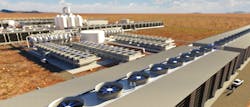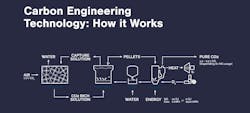Negative-Emissions Technologies Are Gaining Momentum
In October 2018, I wrote about the United Nations Intergovernmental Panel on Climate Change (IPCC) “Special Report on Global Warming of 1.5°C,” which had just been released.
That report, according to its full name, addressed “the impacts of global warming of 1.5°C above pre-industrial levels and related global greenhouse gas emission pathways, in the context of strengthening the global response to the threat of climate change, sustainable development, and efforts to eradicate poverty.”
One of the points made in the report was that reducing greenhouse gas (GHG) emissions alone will not limit global warming to the 1.5-degree threshold considered critical. According to the scientists, just one-half degree higher could result in widespread damage to virtually all of the world’s coral reefs, significantly increase Arctic Sea ice melt, double the world’s water stress, and reduce half of the insect habitats needed for food crop pollination. In addition to reducing GHG emissions, the report suggested that negative-emissions technologies (NET) must also be adopted.
These NETs would remove and sequester CO2 from the air and, unlike carbon capture that removes CO2 only from point sources (e.g., fossil-fuel power plants), NETs remove CO2 directly from the atmosphere. Several NET projects that show promise include those being developed by Canadian-based Carbon Engineering Ltd., Swiss-based Climeworks, and Ireland’s Silicon Kingdom Holdings. Here in the US, Global Thermostat also has several projects underway.
Six months ago, in August 2020, Oxy Low Carbon Ventures, LLC, a subsidiary of private equity firm Occidental, and Rusheen Capital Management, formed 1PointFive to finance and deploy Carbon Engineering’s large-scale Direct Air Capture (DAC) technology.
“The formation of 1PointFive is a significant catalyst that will advance our plans to build the world’s largest-scale DAC facility to remove substantial volumes of carbon dioxide emissions from the atmosphere,” said Richard Jackson, Oxy Low Carbon Ventures President and Chairman of 1PointFive. This plant, when operational, will be the largest DAC plant in the world, capturing up to one million metric tons of atmospheric CO2 annually.
Climeworks DAC technology, combined with the storage process developed by the Icelandic company Carbfix, removes carbon dioxide from the air and stores it permanently underground. In addition to its agreement with Carbfix, Climeworks also has an agreement with ON Power, an Icelandic geothermal energy provider, and they are planning a new plant that will significantly scale-up carbon removal and storage in Iceland. According to its website, Climeworks has 14 DAC facilities, including the world’s first commercial facility.
Silicon Kingdom Holdings utilizes a proprietary passive DAC (PDACtm) technology. Unlike other DAC technologies that use large fans, their MechanicalTreestm are a less complex, lower cost, modular system that relies on the wind to deliver ambient air. Arizona State University announced in 2019 that they would deploy the world’s first commercially viable PDACtm system.
Closer to home, New York City-based Global Thermostat announced last September that it had signed a contract with ExxonMobil that would help bring its commercially-viable DAC technology to the scale necessary to reverse climate change. The joint development agreement follows an earlier contract that produced 12 months of technical evaluation by ExxonMobil to determine the potential scalability of that technology.
We need to continue to strive to reduce GHG emissions, but we will clearly need to depend on technological advancements if we are to meet the 1.5°C. limit on global warming.
##########
A regular contributor to HPAC Engineering and a member of its editorial advisory board since 2012, Clark, LEED AP, O+M, is a principal at Sustainable Performance Solutions LLC, a south Florida-based engineering firm focusing on energy and sustainability. Email him at [email protected].
About the Author
Larry Clark
A member of HPAC Engineering’s Editorial Advisory Board, Lawrence (Larry) Clark, QCxP, GGP, LEED AP+, is principal of Sustainable Performance Solutions LLC, a South Florida-based engineering firm focused on energy and sustainability consulting. He has more than two dozen published articles on HVAC- and energy-related topics to his credit and frequently lectures on green-building best practices, central-energy-plant optimization, and demand-controlled ventilation.

